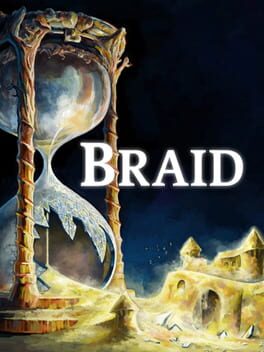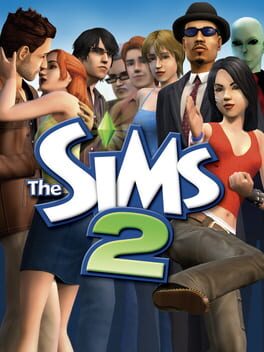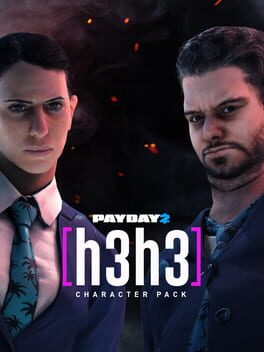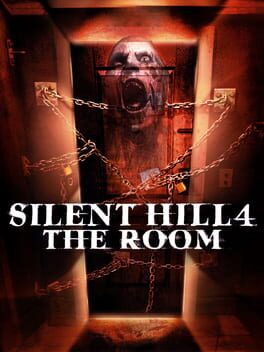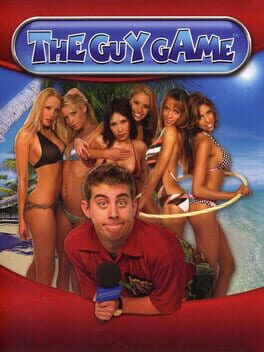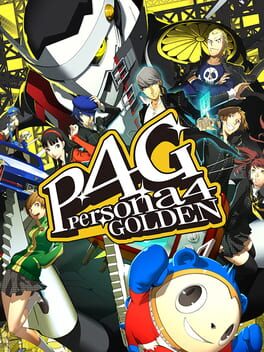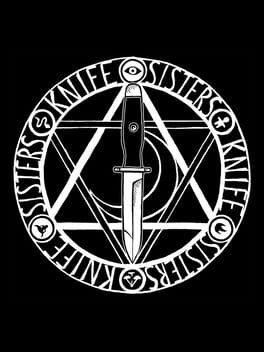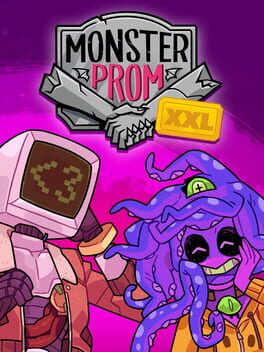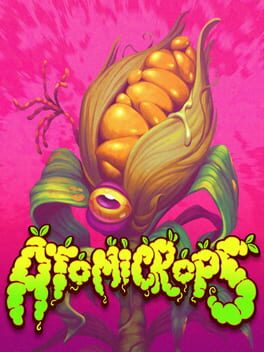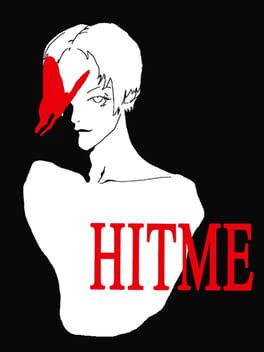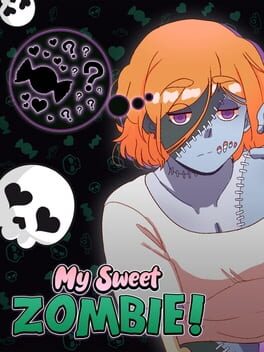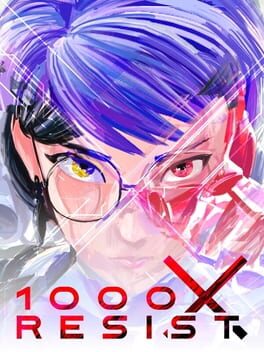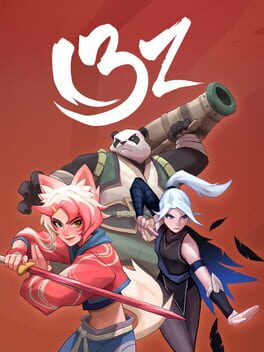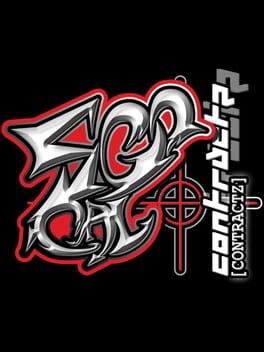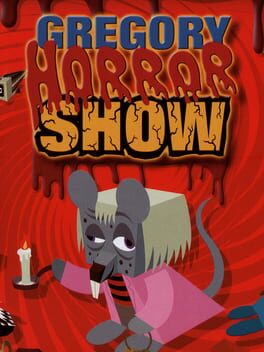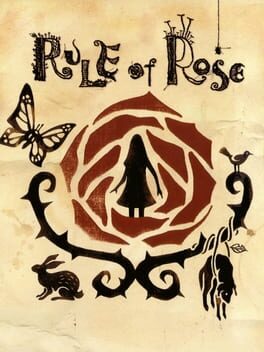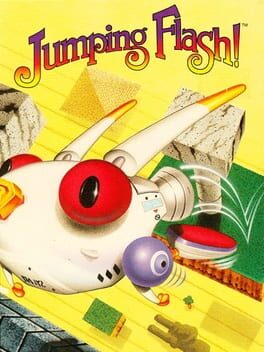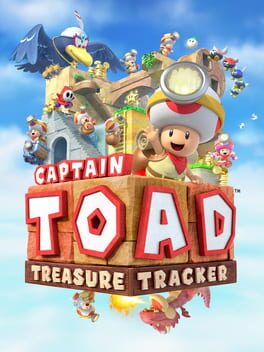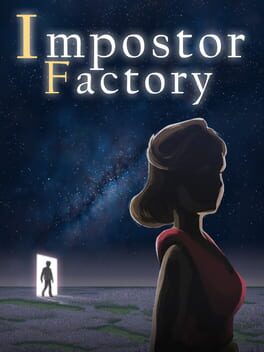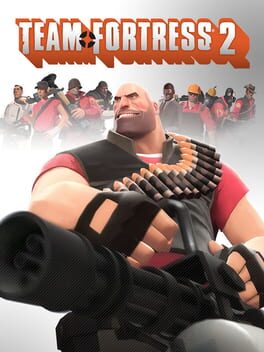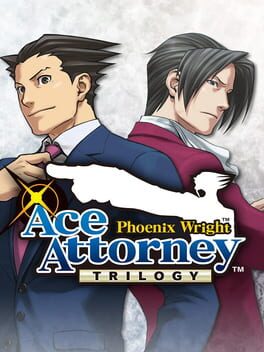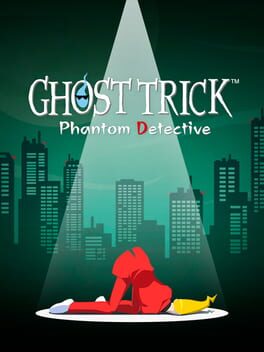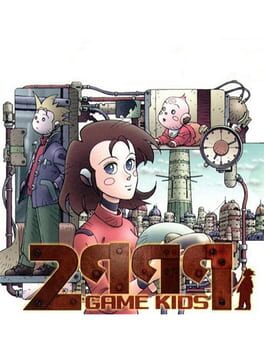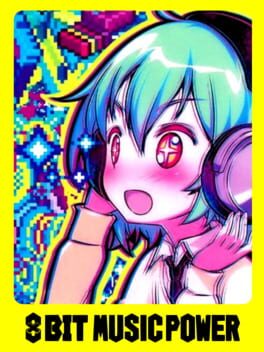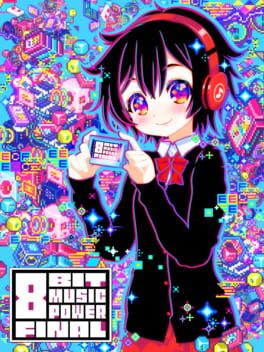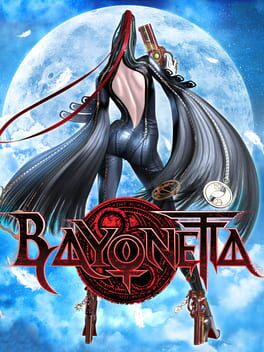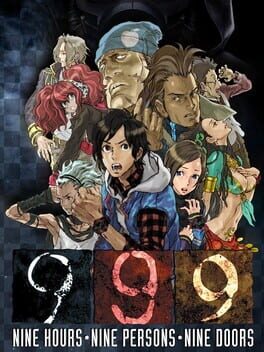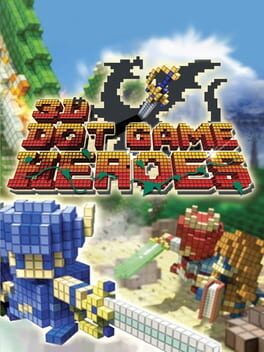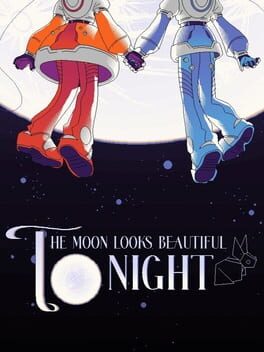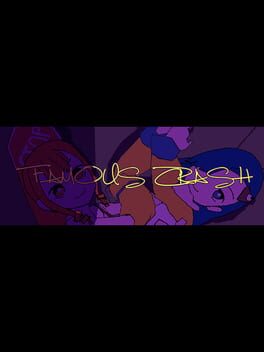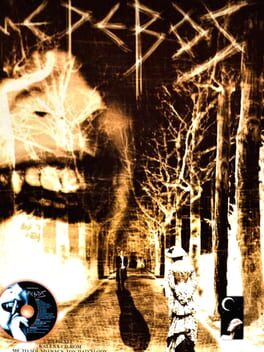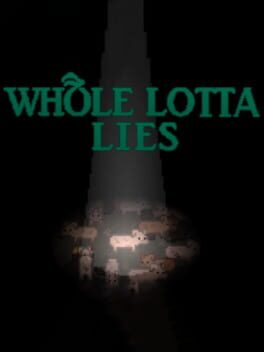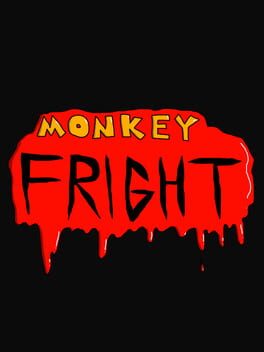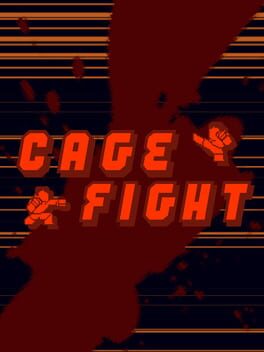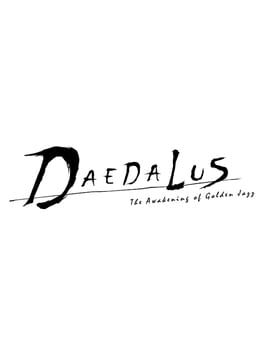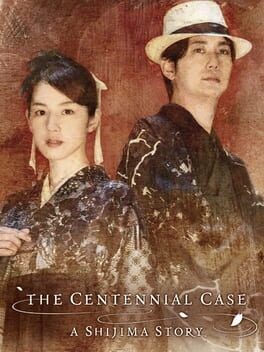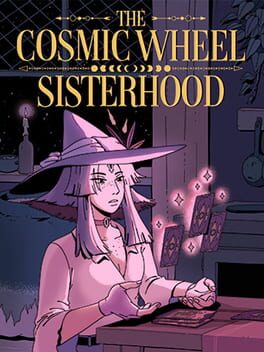Niandra
186 reviews liked by Niandra
Braid
2008
ngl I now understand the hate for Johnathan Blow's work.
Fiddly, dissatisfying gameplay paired with clunky level design.
Inspired by the least interesting parts of mario games and the most insufferable parts of straight break-up stories. An oversaturation of incoherent mechanics and often annoying to exectute solutions.
Babies first attempt at connecting theme and narrative to gameplay.
Next one is definetly a nitpick, but why tf do all these thick green books each only have a single paragraph in them? is it really more important to advance the text by walking to the next book, a lazy attempt at tying 2D platformer movement to exposition dumps or might this just be another glaringly obvious symptom of how clunky this whole thing is designed?
idk maybe don't attempt to speer head "art games" if you already have a hard time with basic ass design.
i also have an irrational disdain for the greasy "painterly" sprite work. Looks like they used a gamer's armpit as a digital brush in photoshop CS3.
yea yea I am just a hater, just ignore my dumb, unhinged opinion. i really just needed to rant before uninstalling this thing.
Fiddly, dissatisfying gameplay paired with clunky level design.
Inspired by the least interesting parts of mario games and the most insufferable parts of straight break-up stories. An oversaturation of incoherent mechanics and often annoying to exectute solutions.
Babies first attempt at connecting theme and narrative to gameplay.
Next one is definetly a nitpick, but why tf do all these thick green books each only have a single paragraph in them? is it really more important to advance the text by walking to the next book, a lazy attempt at tying 2D platformer movement to exposition dumps or might this just be another glaringly obvious symptom of how clunky this whole thing is designed?
idk maybe don't attempt to speer head "art games" if you already have a hard time with basic ass design.
i also have an irrational disdain for the greasy "painterly" sprite work. Looks like they used a gamer's armpit as a digital brush in photoshop CS3.
yea yea I am just a hater, just ignore my dumb, unhinged opinion. i really just needed to rant before uninstalling this thing.
Pseudoregalia
2023
Pseudoregalia strikes me as a short and satisfying 3D platformer, though I hesitate to call it succinct. Its core strength is its simple yet nuanced toolkit, as its multi-faceted movement options provide great depth. For example, the wall-kick serves an obvious purpose as a wall jump by kicking between two opposite walls, but you can also use the wall kick to alter your trajectory and gain more air-time. This can lead to exploits such as wall-kicking up corners to scale previously unreachable platforms, or wall-kicking just below ledges and immediately reversing your trajectory with another wall-kick to grab the ledge. As a result, the game's many obstacle courses never feel prohibitive and are not so much tied to specific upgrades as they are to the player's ability to execute movement tech, making exploration feel much more open-ended. Unfortunately, Pseudoregalia's exploration is stunted somewhat because it's super easy to get lost without any maps or checklists showing the player where to go/what's left to collect. The room layouts further exacerbate this confusion, because the overworld consists of many long branching tunnels instead of focusing on larger, more open areas that allow for hidden shortcuts. If all of the six main sectors had shortcuts to one another so I could access any section from any main hub (as opposed to wasting time mindlessly backtracking through the same central hubs), I think that my overall playtime would have been shortened by a solid hour or more.
Similarly, combat simply exists in Pseudoregalia, and could have been removed altogether with little consequence. Aside from two isolated bosses (one tutorial boss and one final boss), combat is usually unnecessary since most enemies can be easily avoided by constantly moving about. There's generally no tangible benefit to attacking enemies outside of restoring energy for healing. While there is an unlockable ability that lets you gain height while attacking enemies mid-air, I can't recall any real need to utilize this ability against moving foes outside of the collectible's immediate vicinity. The combat's superfluity becomes even more flagrant thanks to a few forced encounters: these tedious affairs require players to exterminate various spongey enemies to unlock a room's exits. As such, I think combat should be taken out while keeping invulnerable enemies around as a threat, and health restoration could be entirely tied to save crystals instead. I'd also be okay replacing the final boss with a final obstacle gauntlet forcing me to put all my movement tech to the test: while not a terrible fight, it felt a bit out of place relying on fairly restrained bait-and-punish + heal to defeat a final boss when I'd much rather be zipping about. Regardless, Pseudoregalia is a solid Steam debut for rittzler that's well worth the price of entry despite its lack of polish, and it's a game that I could see myself warming up to further with additional runs. I can't wait to see what they've got in mind for Electrokinetic.
Similarly, combat simply exists in Pseudoregalia, and could have been removed altogether with little consequence. Aside from two isolated bosses (one tutorial boss and one final boss), combat is usually unnecessary since most enemies can be easily avoided by constantly moving about. There's generally no tangible benefit to attacking enemies outside of restoring energy for healing. While there is an unlockable ability that lets you gain height while attacking enemies mid-air, I can't recall any real need to utilize this ability against moving foes outside of the collectible's immediate vicinity. The combat's superfluity becomes even more flagrant thanks to a few forced encounters: these tedious affairs require players to exterminate various spongey enemies to unlock a room's exits. As such, I think combat should be taken out while keeping invulnerable enemies around as a threat, and health restoration could be entirely tied to save crystals instead. I'd also be okay replacing the final boss with a final obstacle gauntlet forcing me to put all my movement tech to the test: while not a terrible fight, it felt a bit out of place relying on fairly restrained bait-and-punish + heal to defeat a final boss when I'd much rather be zipping about. Regardless, Pseudoregalia is a solid Steam debut for rittzler that's well worth the price of entry despite its lack of polish, and it's a game that I could see myself warming up to further with additional runs. I can't wait to see what they've got in mind for Electrokinetic.
Persona 3 Reload
2024
This review contains spoilers
I want to start this review with some sort of stinger line, but I have too many to choose from. Persona 3 Reload is a 2006 game in the clothing of a 2024 game. Persona 3 Reload is a game about extremely mature themes that also treats its players like their children. Persona 3 Reload is an artistically stunning game that refuses to faithfully reimagine its original version. Persona 3 Reload is a special, deeply emotional experience bogged down by excruciating filler. Persona 3 Reload is a very good video game, but man do I wish it was just a little bit better.
I first want to speak about the party members and my thoughts on their arcs. You spend so much time with this cast, and although I wasn’t able to complete Yukari’s social link, I tried to give everyone else as much time as possible to see their development.
Akihiko Sanada
Easily my favorite character in the game. Yeah, I like Alejandro Saab a little too much, but even disregarding that I found Aki to be exceptionally well-written. His relationship with Ken and Shinjiro is given plenty of time to develop with proper foreshadowing. His persona awakening scene was a genuine, heartfelt moment that made me tear up. I disagree with the notion that Akihiko is a gym bro with little else going on underneath the hood; in critical moments in the story, Aki is always hit hard in one way or another. Shinji’s death? A turning point in his arc. Ken’s entire existence? It leads Akihiko to a greater truth about himself. Mitsuru’s father dying? It causes Mitsuru to go MIA for the first time in the story, forcing Aki into a leadership role which he’s clearly not mentally prepared for. I feel like Akihiko is the most fully realized character in the story for this reason, and in general he’s just an extremely likable dude.
Shinjiro Aragaki
Most of what I have to say about Shinjiro goes in tandem with Akihiko, but the one thing I do want to mention here is that Shinjiro is a very well-executed major character death. Not only does it help complete several characters’ arcs, but his sacrifice is brought up in the story all the way up until the end, which gives his character a particular weight. I wish I didn’t get spoiled about his death though…I just wanted to look up his voice actor and Google autocomplete screwed me over.
Aigis
It took quite a while for Aigis’ arc to truly begin, but it was worth the wait. Aigis’ social link explores what it means to be human in a philosophical sense, and I truly did feel so sorry for Aigis due to her impossible position. Some aspects of her character are a little iffy though, I will admit. Being able to romance Aigis feels wrong for many reasons. For one, Aigis is technically significantly older than Makoto. But also, Aigis really only awakens to her humanity within the events of the game, which means mentally she’s very young, immature, and naive. Essentially, both ways you look at it, it just feels kind of icky for her to be romanceable. However, I will admit I considered romancing Aigis just because I felt so bad seeing her have constant panic attacks in the social links.
Junpei Iori
Junpei…such a strong character arc made somewhat invalidated by Atlus’ reluctance to let go of their incessant use of anime tropes. Junpei genuinely grows so much throughout the story and is one of the only characters to actually lash out at Makoto and think for himself. His relationship with Chidori was by far my favorite aspect of the entire game–but then, they decided to bring Chidori back to life in the very final few hours of the story, with an ass-pull of an explanation to boot. And then, they had Junpei go back to his usual immature self so that he can be the punching bag of the party again. And then, they made Junpei forget about Chidori in the epilogue. What the hell, Atlus? Like seriously, what is the point of giving a character this much growth only to revert him by the end? I don’t understand.
Fuuka Yamagishi
I liked Fuuka a lot! She’s unique among the party for being the only character whose arc doesn’t really involve losing a loved one. You could say it’s her friend, Natsuki, but Fuuka actually manages to save her life and they are still connected by the end of the game. Fuuka’s social link was kind of whatever, though, and I felt that she needed to be introduced in the story quite a bit earlier.
Ken Amada
I feel like everyone always forgets about Ken, but I really did think he was executed quite well. It’s unbelievably tragic to imagine what he’s been through at such a young age, which makes his eventual resolve all the more captivating. I do wish he actually did beat Makoto at the end of his final linked episode, though Atlus can’t make it so their protagonists ever lose anything so I get it I guess.
Yukari Takeba
It took me a while to grow on Yukari, but eventually I did come to appreciate her. She’s quite emotionally strong compared to the rest of the party and definitely can feel the most like a real person out of the group. I wish I did more of her social link, but she gets bonus points for that one amazing scene during the beach trip section of the game.
Mitsuru Kirijo
Sorry, but she’s a bit overrated. I like where her social link eventually ended up, but she takes far too long to become an interesting character considering how much screen time she gets and how important she is to the overall lore and story. I genuinely felt nothing when her dad died.
Koromaru
He’s a good boy.
Social Links
I’ll go through these quickly. Yuko is best girl and the character I romanced. Mutatsu is my favorite overall social link, with Tanaka, Akinari, and Maiko not too far behind. The rest are generally pretty good but nothing that will stick in my memory, and Suemitsu is godawful.
Gameplay
From what I’m aware, the original Persona 3 had a fatigue system that discouraged you from completing a Tartarus block in one night. I can understand why Atlus would want to remove this from Reload, but they didn’t put anything new in its place to prevent players from completing the block all at once. In fact, it’s basically encouraged at this point; every month I would wait for Elizabeth to tell me the missing persons, essentially procrastinate the entire dungeon crawling aspect of the game, and then blaze through the Tartarus block mere days before the full moon, to maximize my time elsewhere. The problem with this is that these blocks take HOURS. I dreaded every time I had to take so long to clear out these blocks, and honestly if it weren’t for Discord calls with my friends I don’t know if I could have ever completed this game. This could have been such an easy fix; instead of discouraging completing the block in one night like in the original Persona 3, figure out a system that encourages players to go in multiple times, like a temporary buff for the first few floors of a night (and then you can actually make the enemies harder, what a concept!).
This might be blasphemous to say, but Persona has the most “it goes in the square hole” combat I’ve seen in an RPG since Pokemon, and quite frankly I found it serviceable and nothing more. Theurgies are probably the coolest part of the system, but even then most of them are just pretty-looking win buttons. I found out that critical hits are insanely broken and basically melted everything in the game without much issue, even on hard mode. If you want a combat system like Persona’s but with more depth and variety, I would suggest Octopath Traveler, especially the second one. The only thing it doesn’t have is the Persona system, so I guess if that’s the main appeal I can understand why people are attached to this framework.
Visuals and Music
As an outsider to the Persona series looking in, for a long time Persona 3 captivated me for its audiovisual design and overall atmosphere. It felt extremely 2000s, with a sort of “underground” feel that I don’t know if I can completely describe. In contrast, Persona 3 Reload keeps some of this, but there isn’t nearly enough for my liking. I think Iwatodai Dorm’s theme is the best way to explain how I feel. The original is funky as in “modern and stylish in an unconventional or striking way,” whereas the remake is funky as in “having or using a strong dance rhythm, in particular that of funk” (thank Google for these definitions). The original’s vocal samples feel like Satan is rapping incoherently rapping at me whereas the remake, while great, is just Lotus Juice being his usual cool self. It’s just not the same, and the lack of an original music toggle remains one of my biggest issues with Reload. It’s not even that I dislike the new OST–in fact, I think I like them equally. But the change in tone is very apparent, and I found it disappointing.
Story and Themes
Persona 3’s themes connected with me in an unusual way, because of my current life situation. As I am writing this, I am about to leave for a study abroad program far, far away from home and will be away for over four months. It’s one of the biggest changes I will have experienced in my life. I won’t lie, Persona’s emphasis on time being limited and its themes about making the most of your life have significantly influenced my mindset as of late. For that, I am grateful that Persona has allowed me to cope with such a significant change. I have more to say on the story than just this, but this is the most poignant aspect that I have connected with, so I think I’ll leave it there.
I should have explained in the beginning that this is my first ever Persona game, but you can probably already tell. I also want to clarify that I really did enjoy this game overall, but it’s one of those pieces of media that is most interesting to think about both positively and negatively, because there’s just so much room for it. I will be continuing my Persona journey with Persona 4 Golden soon, but until then, thank you for reading my review :)
I first want to speak about the party members and my thoughts on their arcs. You spend so much time with this cast, and although I wasn’t able to complete Yukari’s social link, I tried to give everyone else as much time as possible to see their development.
Akihiko Sanada
Easily my favorite character in the game. Yeah, I like Alejandro Saab a little too much, but even disregarding that I found Aki to be exceptionally well-written. His relationship with Ken and Shinjiro is given plenty of time to develop with proper foreshadowing. His persona awakening scene was a genuine, heartfelt moment that made me tear up. I disagree with the notion that Akihiko is a gym bro with little else going on underneath the hood; in critical moments in the story, Aki is always hit hard in one way or another. Shinji’s death? A turning point in his arc. Ken’s entire existence? It leads Akihiko to a greater truth about himself. Mitsuru’s father dying? It causes Mitsuru to go MIA for the first time in the story, forcing Aki into a leadership role which he’s clearly not mentally prepared for. I feel like Akihiko is the most fully realized character in the story for this reason, and in general he’s just an extremely likable dude.
Shinjiro Aragaki
Most of what I have to say about Shinjiro goes in tandem with Akihiko, but the one thing I do want to mention here is that Shinjiro is a very well-executed major character death. Not only does it help complete several characters’ arcs, but his sacrifice is brought up in the story all the way up until the end, which gives his character a particular weight. I wish I didn’t get spoiled about his death though…I just wanted to look up his voice actor and Google autocomplete screwed me over.
Aigis
It took quite a while for Aigis’ arc to truly begin, but it was worth the wait. Aigis’ social link explores what it means to be human in a philosophical sense, and I truly did feel so sorry for Aigis due to her impossible position. Some aspects of her character are a little iffy though, I will admit. Being able to romance Aigis feels wrong for many reasons. For one, Aigis is technically significantly older than Makoto. But also, Aigis really only awakens to her humanity within the events of the game, which means mentally she’s very young, immature, and naive. Essentially, both ways you look at it, it just feels kind of icky for her to be romanceable. However, I will admit I considered romancing Aigis just because I felt so bad seeing her have constant panic attacks in the social links.
Junpei Iori
Junpei…such a strong character arc made somewhat invalidated by Atlus’ reluctance to let go of their incessant use of anime tropes. Junpei genuinely grows so much throughout the story and is one of the only characters to actually lash out at Makoto and think for himself. His relationship with Chidori was by far my favorite aspect of the entire game–but then, they decided to bring Chidori back to life in the very final few hours of the story, with an ass-pull of an explanation to boot. And then, they had Junpei go back to his usual immature self so that he can be the punching bag of the party again. And then, they made Junpei forget about Chidori in the epilogue. What the hell, Atlus? Like seriously, what is the point of giving a character this much growth only to revert him by the end? I don’t understand.
Fuuka Yamagishi
I liked Fuuka a lot! She’s unique among the party for being the only character whose arc doesn’t really involve losing a loved one. You could say it’s her friend, Natsuki, but Fuuka actually manages to save her life and they are still connected by the end of the game. Fuuka’s social link was kind of whatever, though, and I felt that she needed to be introduced in the story quite a bit earlier.
Ken Amada
I feel like everyone always forgets about Ken, but I really did think he was executed quite well. It’s unbelievably tragic to imagine what he’s been through at such a young age, which makes his eventual resolve all the more captivating. I do wish he actually did beat Makoto at the end of his final linked episode, though Atlus can’t make it so their protagonists ever lose anything so I get it I guess.
Yukari Takeba
It took me a while to grow on Yukari, but eventually I did come to appreciate her. She’s quite emotionally strong compared to the rest of the party and definitely can feel the most like a real person out of the group. I wish I did more of her social link, but she gets bonus points for that one amazing scene during the beach trip section of the game.
Mitsuru Kirijo
Sorry, but she’s a bit overrated. I like where her social link eventually ended up, but she takes far too long to become an interesting character considering how much screen time she gets and how important she is to the overall lore and story. I genuinely felt nothing when her dad died.
Koromaru
He’s a good boy.
Social Links
I’ll go through these quickly. Yuko is best girl and the character I romanced. Mutatsu is my favorite overall social link, with Tanaka, Akinari, and Maiko not too far behind. The rest are generally pretty good but nothing that will stick in my memory, and Suemitsu is godawful.
Gameplay
From what I’m aware, the original Persona 3 had a fatigue system that discouraged you from completing a Tartarus block in one night. I can understand why Atlus would want to remove this from Reload, but they didn’t put anything new in its place to prevent players from completing the block all at once. In fact, it’s basically encouraged at this point; every month I would wait for Elizabeth to tell me the missing persons, essentially procrastinate the entire dungeon crawling aspect of the game, and then blaze through the Tartarus block mere days before the full moon, to maximize my time elsewhere. The problem with this is that these blocks take HOURS. I dreaded every time I had to take so long to clear out these blocks, and honestly if it weren’t for Discord calls with my friends I don’t know if I could have ever completed this game. This could have been such an easy fix; instead of discouraging completing the block in one night like in the original Persona 3, figure out a system that encourages players to go in multiple times, like a temporary buff for the first few floors of a night (and then you can actually make the enemies harder, what a concept!).
This might be blasphemous to say, but Persona has the most “it goes in the square hole” combat I’ve seen in an RPG since Pokemon, and quite frankly I found it serviceable and nothing more. Theurgies are probably the coolest part of the system, but even then most of them are just pretty-looking win buttons. I found out that critical hits are insanely broken and basically melted everything in the game without much issue, even on hard mode. If you want a combat system like Persona’s but with more depth and variety, I would suggest Octopath Traveler, especially the second one. The only thing it doesn’t have is the Persona system, so I guess if that’s the main appeal I can understand why people are attached to this framework.
Visuals and Music
As an outsider to the Persona series looking in, for a long time Persona 3 captivated me for its audiovisual design and overall atmosphere. It felt extremely 2000s, with a sort of “underground” feel that I don’t know if I can completely describe. In contrast, Persona 3 Reload keeps some of this, but there isn’t nearly enough for my liking. I think Iwatodai Dorm’s theme is the best way to explain how I feel. The original is funky as in “modern and stylish in an unconventional or striking way,” whereas the remake is funky as in “having or using a strong dance rhythm, in particular that of funk” (thank Google for these definitions). The original’s vocal samples feel like Satan is rapping incoherently rapping at me whereas the remake, while great, is just Lotus Juice being his usual cool self. It’s just not the same, and the lack of an original music toggle remains one of my biggest issues with Reload. It’s not even that I dislike the new OST–in fact, I think I like them equally. But the change in tone is very apparent, and I found it disappointing.
Story and Themes
Persona 3’s themes connected with me in an unusual way, because of my current life situation. As I am writing this, I am about to leave for a study abroad program far, far away from home and will be away for over four months. It’s one of the biggest changes I will have experienced in my life. I won’t lie, Persona’s emphasis on time being limited and its themes about making the most of your life have significantly influenced my mindset as of late. For that, I am grateful that Persona has allowed me to cope with such a significant change. I have more to say on the story than just this, but this is the most poignant aspect that I have connected with, so I think I’ll leave it there.
I should have explained in the beginning that this is my first ever Persona game, but you can probably already tell. I also want to clarify that I really did enjoy this game overall, but it’s one of those pieces of media that is most interesting to think about both positively and negatively, because there’s just so much room for it. I will be continuing my Persona journey with Persona 4 Golden soon, but until then, thank you for reading my review :)
Pseudoregalia
2023
Yeah it's alright. Pseudoregalia feels like an attempt to create a weird mashup of a character-focused 3D platformer like Super Mario Odyssey with a moody exploration-focused metroidvania. And... well, I'm not sure if the mash-up really works or not here. Don't get me wrong I enjoyed my time with this, but there's a lot in here that feels like it could be improved.
First and foremost though the focus is on Sybil and her honestly impressively expansive moveset. She feels like she was designed with the same 'you could have fun playing as this character in an empty room' ethos that gave rise to Super Mario 64 and, at its best, her movement is indeed very satisfying to nail down. But I don't think the controls are tight enough to fully pull this off; perhaps this is my fault for using keyboard and mouse, but I found some of her controls extremely janky, especially the wall kick which more often than not devolved into spamming space and praying. At times it feels like this jank is almost a deliberate design choice; it is often possible to manage to platform your way into places that feel like they should be just out of reach, but more often than not I think the janky platforming tricks I was pulling off were in fact the intended route. This 'trial by jank' gameplay is an interesting design ethos if it is in fact deliberate, and not necessarily a bad one; it is always very satisfying when you manage to get places it feels like you shouldn't be able to. But I don't think it really gels at all with the Metroidvania side of gameplay here; it was often very difficult to tell whether you needed a new ability to complete a given platforming challenge, or whether you were expected to do it by abusing the quirks of the tools you already had access to.
Aside from the platforming though... why is there combat in this game? The combat is incredibly simplistic, lacking in enemy diversity and barely used except in the most token of ways after the first couple of areas. The only fight that felt like it added any value to this game was the final boss, which was decent enough, but I can't help but feel there would have been a way to reimplement it as a more pure platforming challenge. I do have to say though, beating that final boss did lead to one of the most abrupt and limp endings I've ever experienced in a video game...
On an aesthetic level, pseudoregalia is... confusing? The main character seems uncomfortably sexualised for no real reason, and the visual design of the levels is somehow simultaneously all over the place and quite monotonous. Like, I would describe it as a mix between a Twilight Princess dungeon, a 'cursed PS1/N64' game like Cavern of Dreams and that bit from the animated Beauty and the Beast film when the cups and candles and stuff all come to life. It's an odd and deliberately unsettling mix of styles for sure... but this description applies to every level, and the game does end up feeling quite samey. What doesn't feel samey is the music, which varies hugely in terms of both genre and quality. Some of the soundtrack here is great (especially fond of the Underbelly theme), but then some of the other songs were so simplistic or overblown that they were actually irritating and detracted from the experience.
But at the end of the day, I have to concede that the very innermost core of Pseudoregalia is solid and well-realised. I feel like a lot of the layers on top of that core would need a lot of tweaking for this to be a truly great game, but as it is the game definitely succeeds in its goals, at some level at least. It's definitely another one that takes a while to get going; being a metroidvania, you unlock the interesting moveset as you go, and the start of the game feels pretty lacklustre as a result. But yeah, I'd say this probably is worth a play regardless.
First and foremost though the focus is on Sybil and her honestly impressively expansive moveset. She feels like she was designed with the same 'you could have fun playing as this character in an empty room' ethos that gave rise to Super Mario 64 and, at its best, her movement is indeed very satisfying to nail down. But I don't think the controls are tight enough to fully pull this off; perhaps this is my fault for using keyboard and mouse, but I found some of her controls extremely janky, especially the wall kick which more often than not devolved into spamming space and praying. At times it feels like this jank is almost a deliberate design choice; it is often possible to manage to platform your way into places that feel like they should be just out of reach, but more often than not I think the janky platforming tricks I was pulling off were in fact the intended route. This 'trial by jank' gameplay is an interesting design ethos if it is in fact deliberate, and not necessarily a bad one; it is always very satisfying when you manage to get places it feels like you shouldn't be able to. But I don't think it really gels at all with the Metroidvania side of gameplay here; it was often very difficult to tell whether you needed a new ability to complete a given platforming challenge, or whether you were expected to do it by abusing the quirks of the tools you already had access to.
Aside from the platforming though... why is there combat in this game? The combat is incredibly simplistic, lacking in enemy diversity and barely used except in the most token of ways after the first couple of areas. The only fight that felt like it added any value to this game was the final boss, which was decent enough, but I can't help but feel there would have been a way to reimplement it as a more pure platforming challenge. I do have to say though, beating that final boss did lead to one of the most abrupt and limp endings I've ever experienced in a video game...
On an aesthetic level, pseudoregalia is... confusing? The main character seems uncomfortably sexualised for no real reason, and the visual design of the levels is somehow simultaneously all over the place and quite monotonous. Like, I would describe it as a mix between a Twilight Princess dungeon, a 'cursed PS1/N64' game like Cavern of Dreams and that bit from the animated Beauty and the Beast film when the cups and candles and stuff all come to life. It's an odd and deliberately unsettling mix of styles for sure... but this description applies to every level, and the game does end up feeling quite samey. What doesn't feel samey is the music, which varies hugely in terms of both genre and quality. Some of the soundtrack here is great (especially fond of the Underbelly theme), but then some of the other songs were so simplistic or overblown that they were actually irritating and detracted from the experience.
But at the end of the day, I have to concede that the very innermost core of Pseudoregalia is solid and well-realised. I feel like a lot of the layers on top of that core would need a lot of tweaking for this to be a truly great game, but as it is the game definitely succeeds in its goals, at some level at least. It's definitely another one that takes a while to get going; being a metroidvania, you unlock the interesting moveset as you go, and the start of the game feels pretty lacklustre as a result. But yeah, I'd say this probably is worth a play regardless.
Mom Hid My Game!
2016
The Sims 2
2004
Silent Hill 4 is the type of game that would sound genius in a 2 hour video essay, but if you play it yourself, you will probably end up frustrated. That is to say the ideas in this game read much better on paper than they actually are to deal with.
Your room is dull yet clever. While staring out the window is fascinating, there really isn’t much else to do other than spy on your neighbour. However your apartment is home to inventory management, the only save point (you can return through holes in the levels), and importantly, heals you automatically. This is a great use of gameplay to convey the themes of self-isolation, as it encourages players to crave the safety of the “hub world”.
Then, halfway through the game, is the ultimate rug pull: your apartment is subjected to constant hauntings, and you are no longer auto-healed. The game takes away your comfort and leaves you tense for the rest of the playthrough, never able to truly relax. Plus you now have to worry about healing items. It’s very well done, but it has the drawback of going through tons of loading screens just to save.
The first half of the game has you travelling to different worlds, ranging from slightly altered to unrecognisable versions of real places in the Silent Hill universe (one of them is literally a panopticon). They are quite linear, though still home to a myriad of loading zones. Puzzles range from really obvious hints to “I would not have found this without a guide”. Worst of all for me was the shifting room puzzle in the Water Prison World. But some are about checking an obscure spot.
In these levels, you watch helplessly as people die Freddy Krueger style to a serial killer trying to enact a ritual. Finally, your neighbour, who you have never spoken to but is still the closest you are to anyone, becomes a target. For the rest of the game you desperately try to save her (or fail in the bad ending) as you must struggle past the hauntings of those you could not rescue. Sounds brilliant on paper right? But in gameplay this translates to an entire half of the game being an ESCORT MISSION where you backtrack through previous areas. Yep, by the time you beat the hospital you’ve seen 90% of the game, but you’re only 50% done. Eileen’s AI fucking sucks, always slower than you, moving at an inconsistent pace, sometimes stopping when near an enemy. If she’s not directly next to you she won’t follow you into the next zone. If she takes too much damage you get the bad ending. This half of the game removed almost all of the goodwill I had and made me seriously question if I had the motivation to finish. I toughed it out with a guide but it was pretty miserable.
To top it off, every enemy sucks to deal with and is practically invincible (unless you use a specific item). Most are scary for the first 5 seconds but become rage-inducing with Eileen. The flies (“Hummers”) would be the worst enemy, if it weren’t for guiding Eileen through cramped enemy corridors, and the proximity damage of ghosts.
Don’t get me wrong: themes, art design, symbolic imagery and story are all top-notch. Akira Yamaoka has yet to miss and likely never will. The giant Eileen head genuinely scared the shit out of me the first time. But I can’t shake the fact that a massive chunk of this game was just not enjoyable. Even if it serves the story, even if it sounds super creative, the Eileen backtracking half made this the most difficult Silent Hill for me to appreciate.
Your room is dull yet clever. While staring out the window is fascinating, there really isn’t much else to do other than spy on your neighbour. However your apartment is home to inventory management, the only save point (you can return through holes in the levels), and importantly, heals you automatically. This is a great use of gameplay to convey the themes of self-isolation, as it encourages players to crave the safety of the “hub world”.
Then, halfway through the game, is the ultimate rug pull: your apartment is subjected to constant hauntings, and you are no longer auto-healed. The game takes away your comfort and leaves you tense for the rest of the playthrough, never able to truly relax. Plus you now have to worry about healing items. It’s very well done, but it has the drawback of going through tons of loading screens just to save.
The first half of the game has you travelling to different worlds, ranging from slightly altered to unrecognisable versions of real places in the Silent Hill universe (one of them is literally a panopticon). They are quite linear, though still home to a myriad of loading zones. Puzzles range from really obvious hints to “I would not have found this without a guide”. Worst of all for me was the shifting room puzzle in the Water Prison World. But some are about checking an obscure spot.
In these levels, you watch helplessly as people die Freddy Krueger style to a serial killer trying to enact a ritual. Finally, your neighbour, who you have never spoken to but is still the closest you are to anyone, becomes a target. For the rest of the game you desperately try to save her (or fail in the bad ending) as you must struggle past the hauntings of those you could not rescue. Sounds brilliant on paper right? But in gameplay this translates to an entire half of the game being an ESCORT MISSION where you backtrack through previous areas. Yep, by the time you beat the hospital you’ve seen 90% of the game, but you’re only 50% done. Eileen’s AI fucking sucks, always slower than you, moving at an inconsistent pace, sometimes stopping when near an enemy. If she’s not directly next to you she won’t follow you into the next zone. If she takes too much damage you get the bad ending. This half of the game removed almost all of the goodwill I had and made me seriously question if I had the motivation to finish. I toughed it out with a guide but it was pretty miserable.
To top it off, every enemy sucks to deal with and is practically invincible (unless you use a specific item). Most are scary for the first 5 seconds but become rage-inducing with Eileen. The flies (“Hummers”) would be the worst enemy, if it weren’t for guiding Eileen through cramped enemy corridors, and the proximity damage of ghosts.
Don’t get me wrong: themes, art design, symbolic imagery and story are all top-notch. Akira Yamaoka has yet to miss and likely never will. The giant Eileen head genuinely scared the shit out of me the first time. But I can’t shake the fact that a massive chunk of this game was just not enjoyable. Even if it serves the story, even if it sounds super creative, the Eileen backtracking half made this the most difficult Silent Hill for me to appreciate.
The Guy Game
2004
Persona 4 Golden
2012
13 lists liked by Niandra
by gardenslug |
12 Games
by Odyssey3004 |
56 Games
by MisterProject |
8 Games
by sonicyewth |
11 Games
